7 Ways to Make Windows 11 Look Like Windows 10
Method 1: Bring the Windows 10 Start Menu to Windows 11
The start menu is one of the first elements you interact with on a Windows device. However, since Windows 11 and 10 Start menus are remarkably contrasting, you may start by making Windows 11 start menu like Windows 10. The easiest way is by employing third-party tools, and we will show you how to do it using Start11.
Step 1: Visit the Start11 website and click the Try Free option.

Step 2: Double-click the downloaded file to begin the installation process and follow the installation wizard.
Step 3: Launch the app and click Start 30-Day Trial, then enter your email and verify it by clicking the link sent to your email.
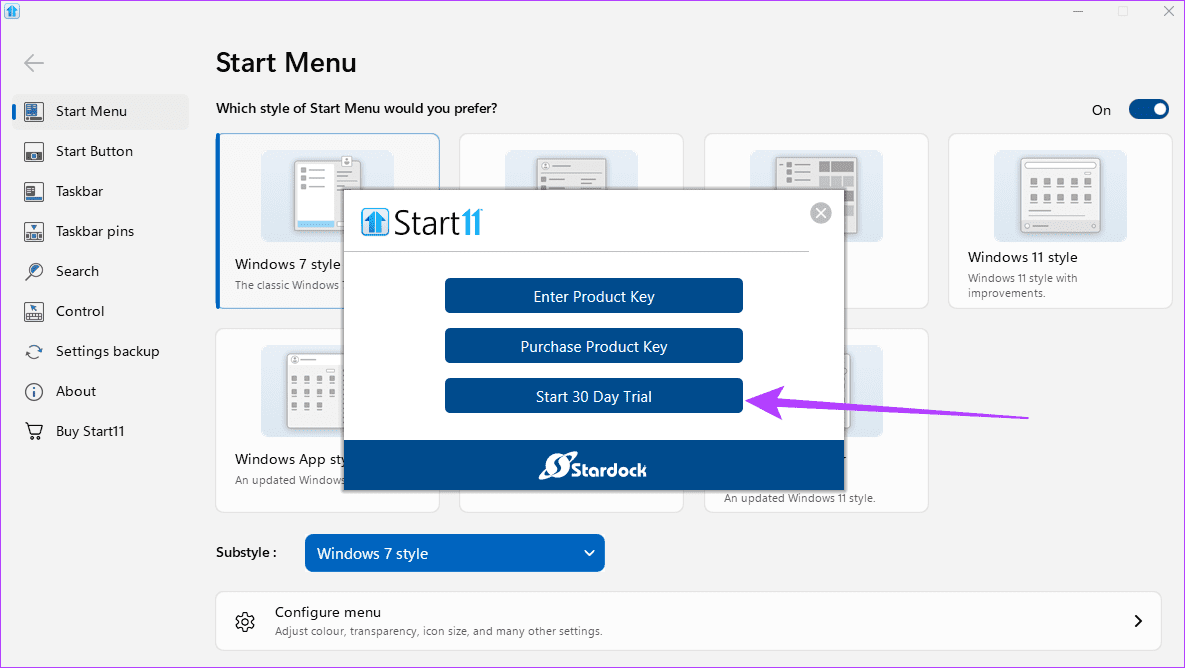
Step 4: Click the Windows 10 style option to make the Windows 11 start menu like Windows 10.
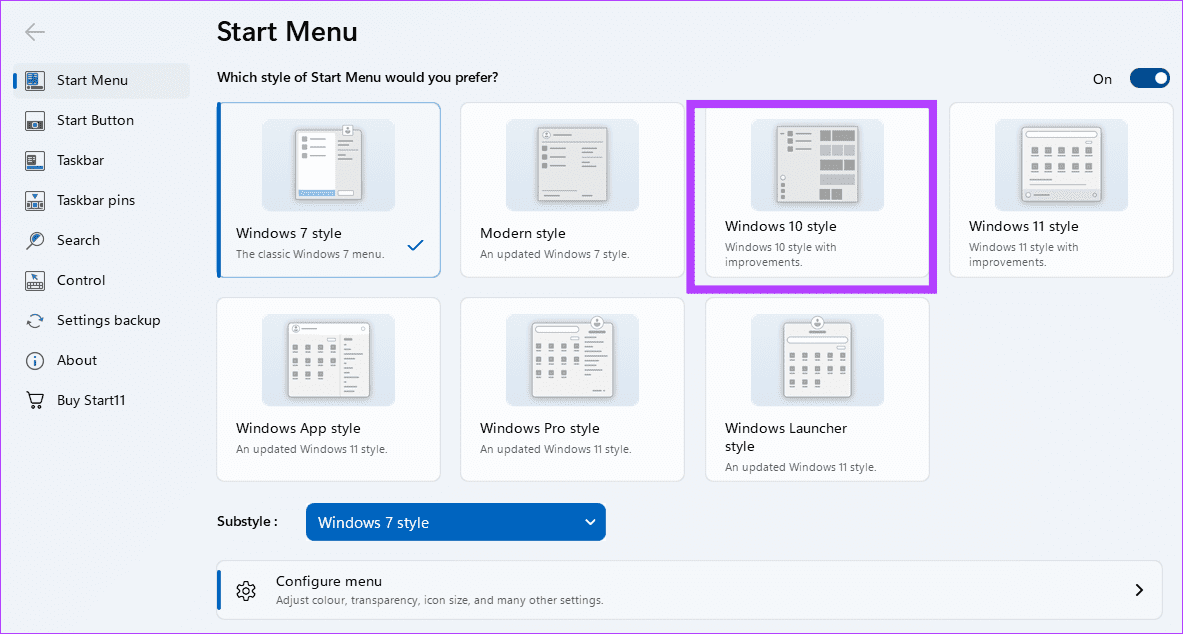
Method 2: Use a Black Start Menu and Taskbar
The black background taskbar and the Start menu were the default for many years. While this is a more complex feature to mimic with Windows 11, you may get the closest look by combining dark and light mode options on the Settings app. Follow the steps below.
Step 1: Open the Settings app by pressing Windows I.
Step 2: On the left pane, click the Personalization option, then on the right, click Colors.
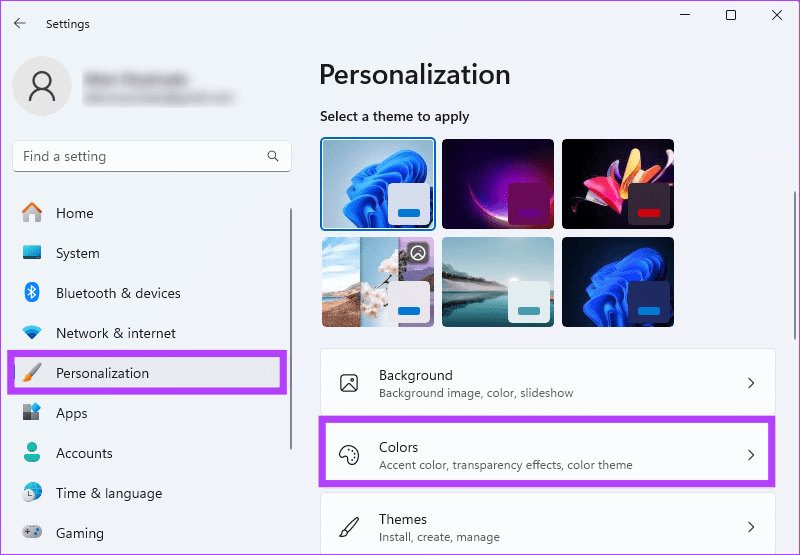
Step 3: Click the Choose your mode dropdown and click Custom.
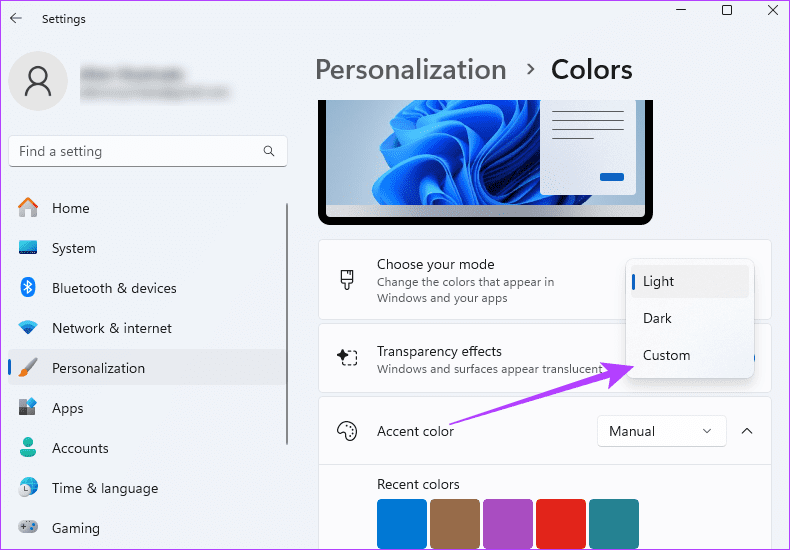
Step 3: To get the closest Windows 11 feel, set Choose your default Windows mode to Dark, and Choose your default app mode to Light.

3. Left Align Taskbar Icons
One prominent feature in Windows 11 is the center-aligned taskbar icon. This feature was aligned to the left in Windows 10, so you may revert it using the Settings app, as shown below.
Step 1: Open the Settings app by pressing Windows I.
Step 2: On the left pane, click the Personalization option, then on the right, click Taskbar.

Step 3: Expand Taskbar behaviors, then set Taskbar alignment to Left to make the Windows 11 Taskbar look like Windows 10.
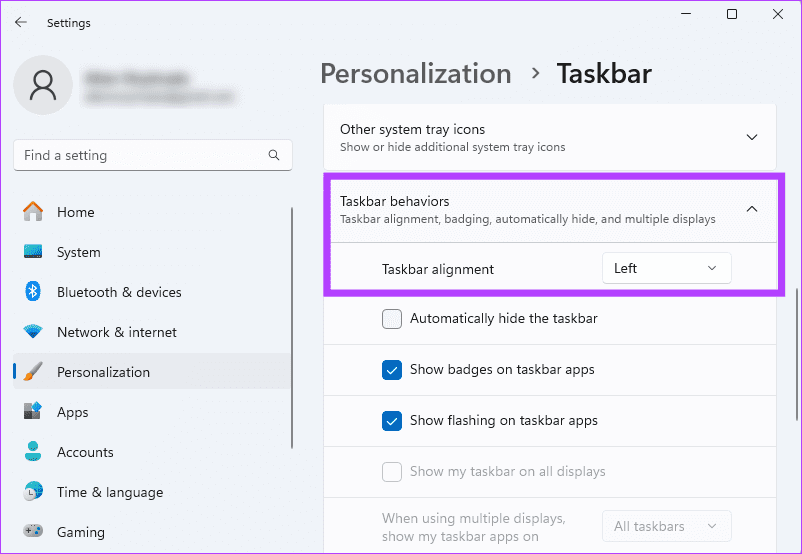
4. Disable Taskbar Icons Exclusive to Windows 11
Windows 11 shares many Taskbar icons with Windows 10; however, a few are exclusive to the newest operating system. Some examples include the Widgets button, Task View, and Copilot. You may follow the steps below to disable them.
Step 1: Open the Settings app by pressing Windows I.
Step 2: On the left pane, click the Personalization option, then on the right, click Taskbar.
Step 3: Toggle off the options for Copilot (preview), Task view, and Widgets.
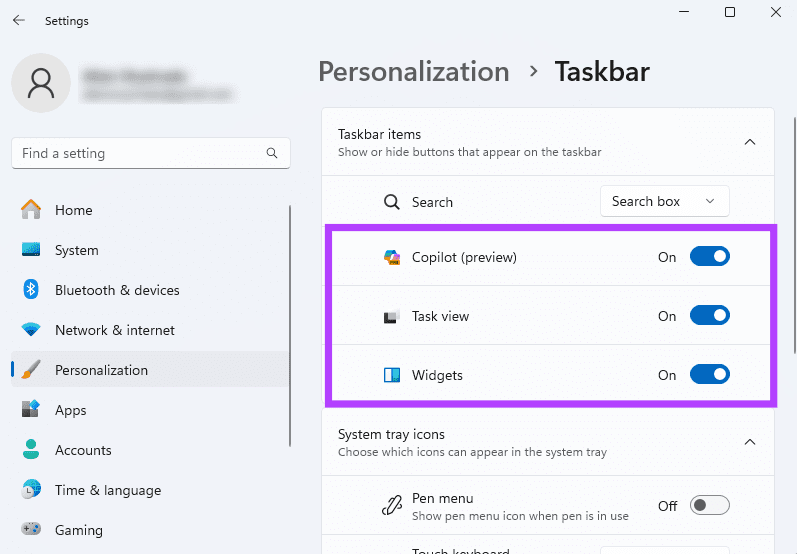
5. Set a Windows 10 Wallpaper as the Default
Another option to make Windows 11 look like Windows 10 is to get a Windows 10 theme/style in Windows 11. You may set a default Windows 10 wallpaper on your computer. You should first download a Windows 10 theme or wallpaper from a trusted vendor, then follow the steps below to update it.
Step 1: Open the Settings app by pressing Windows I.
Step 2: On the left pane, click the Personalization option, then on the right, click Background.
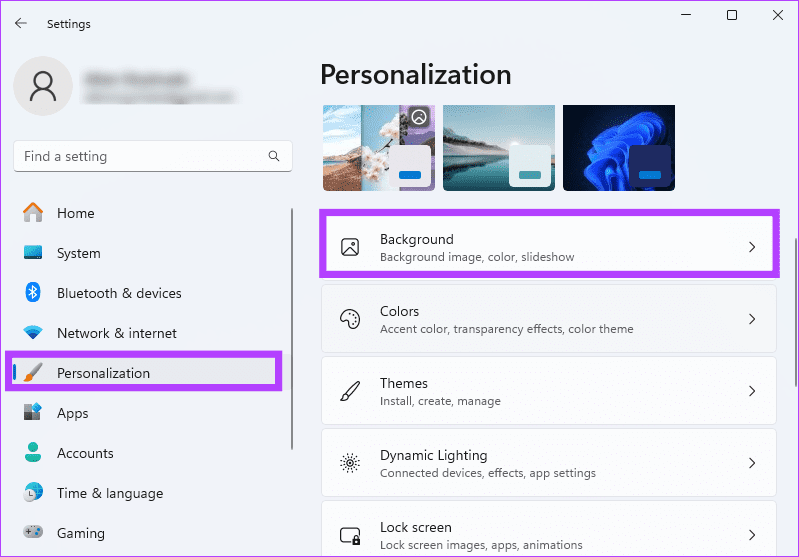
Step 3: Scroll down, then click the Browse photos button.
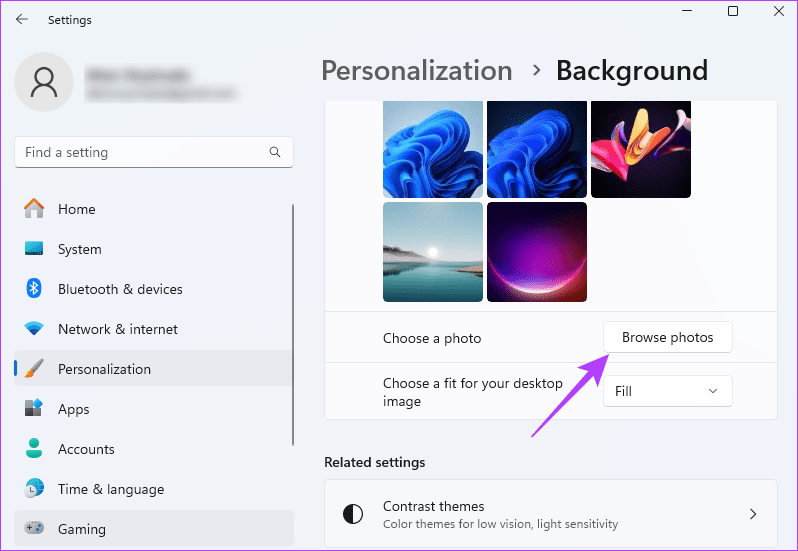
Step 4: Select a Windows 10 wallpaper from the prompt that follows.
6. Use the Windows 10 Context Menu
Another way to make Windows 11 look like Windows 10 is by using the Windows 10 context menu. You may reveal the context menu when you right-click an app, file, or folder on your computer. However, the options and layout differ in both operating systems. You may revert to a Windows 10 feel by tweaking registry options.
Step 1: Press Windows R, then type regedit in the text field and hit Enter.
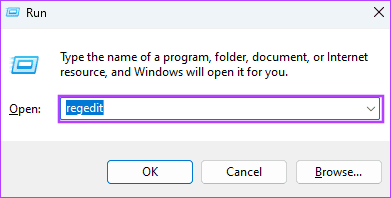
Step 2: Navigate to the path below.
Computer\HKEY_CURRENT_USER\Software\Classes\CLSID
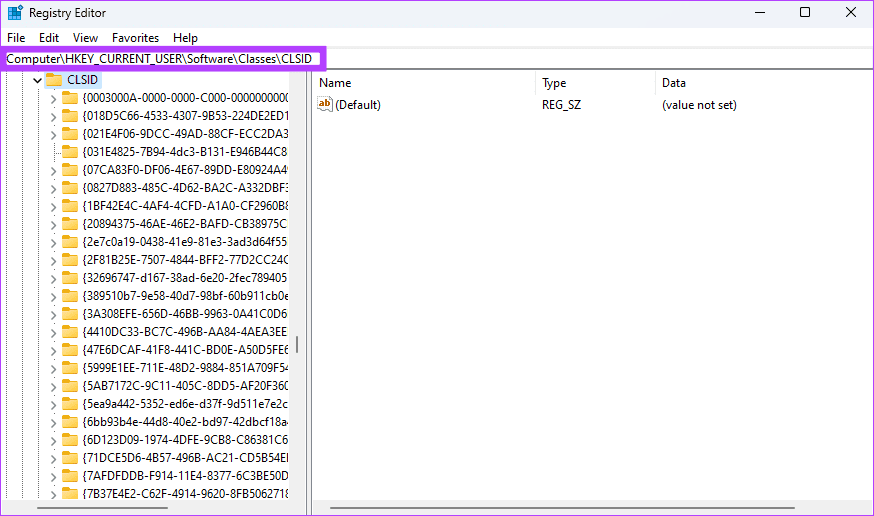
Step 3: Right-click the CLSID folder, select New, and click Key, then name the new key {86ca1aa0-34aa-4e8b-a509-50c905bae2a2}.

Step 4: On the newly created key, perform the same steps as in Step 3 to create a new key and name it InprocServer32.
Step 5: Double-click the newly created key, double-click Default on the right pane, and ensure the Value data is empty.
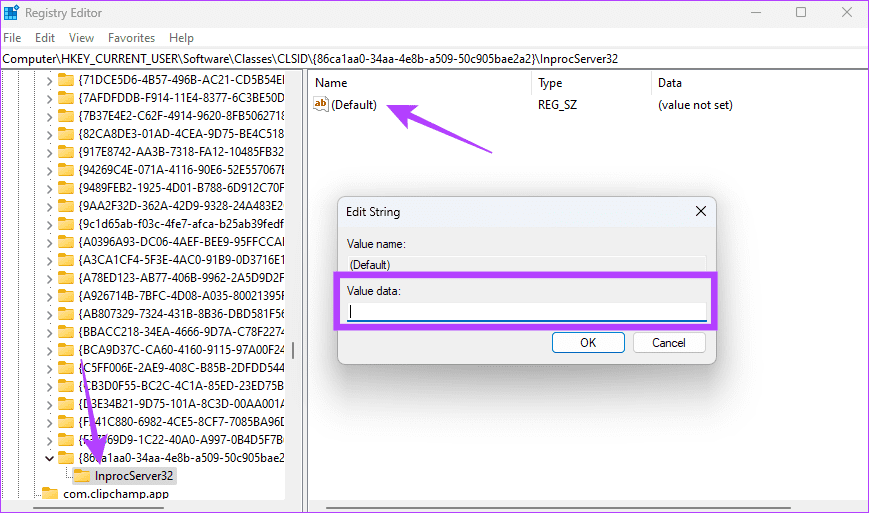
Step 6: Restart the computer.
7. Disable Rounded Corners for Apps
By default, all app windows on Windows 11 open with rounded corners. This is different from the older Windows 10 version that had straight corners. You may edit this feature using the Windows registry, as demonstrated below.
Step 1: Press Windows R, then type regedit in the text field and hit Enter.

Step 2: Navigate to the path below.
HKEY_CURRENT_USER\Software\Microsoft\Windows\DWM

Step 3: Right-click DWN, click New, then click DWORD (32-bit) Value.
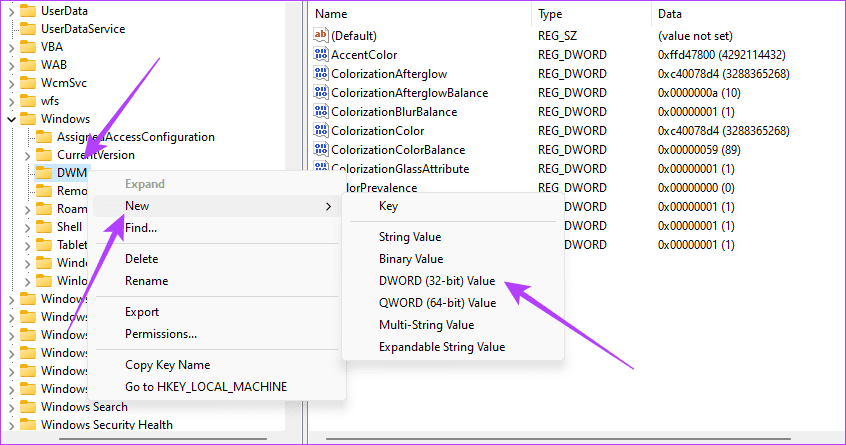
Step 4: Name the new key UseWindowFrameStagingBuffer.
Step 5: Restart your computer for this change to take effect and make Windows 11 look like Windows 10.
-
 How to clone your voice on your iPhone or MacUnlock the Power of Personal Voice on Your Apple Devices: A Comprehensive Guide iOS 17 and macOS Sonoma introduced a groundbreaking accessibility feat...Software tutorial Posted on 2025-02-25
How to clone your voice on your iPhone or MacUnlock the Power of Personal Voice on Your Apple Devices: A Comprehensive Guide iOS 17 and macOS Sonoma introduced a groundbreaking accessibility feat...Software tutorial Posted on 2025-02-25 -
 Fixed - Final Fantasy VII Rebirth an Unreal Process Has CrashedSolve the Unreal engine process crash in Final Fantasy VII Rebirth After "Final Fantasy VII Rebirth" was launched on PC, some players encou...Software tutorial Posted on 2025-02-24
Fixed - Final Fantasy VII Rebirth an Unreal Process Has CrashedSolve the Unreal engine process crash in Final Fantasy VII Rebirth After "Final Fantasy VII Rebirth" was launched on PC, some players encou...Software tutorial Posted on 2025-02-24 -
 How to Change Monitor 1 and 2 in WindowsA common issue in a dual-monitor setup is when you need to move your mouse cursor to the wrong side of the screen to reach the second monitor. You ca...Software tutorial Posted on 2025-02-22
How to Change Monitor 1 and 2 in WindowsA common issue in a dual-monitor setup is when you need to move your mouse cursor to the wrong side of the screen to reach the second monitor. You ca...Software tutorial Posted on 2025-02-22 -
 Assetto Corsa EVO Crashing on Windows? Learn This Top GuideAssetto Corsa EVO crashes after starting or running? Don't worry, this is common in the newly released games! This article provides 4 reliable way...Software tutorial Posted on 2025-02-08
Assetto Corsa EVO Crashing on Windows? Learn This Top GuideAssetto Corsa EVO crashes after starting or running? Don't worry, this is common in the newly released games! This article provides 4 reliable way...Software tutorial Posted on 2025-02-08 -
 Encountering Valorant Friends List Not Working? Here’s GuideEncountering the Valorant friends list not working error can be quite frustrating, particularly when you’re eager to team up with your buddies. This i...Software tutorial Posted on 2025-02-07
Encountering Valorant Friends List Not Working? Here’s GuideEncountering the Valorant friends list not working error can be quite frustrating, particularly when you’re eager to team up with your buddies. This i...Software tutorial Posted on 2025-02-07 -
 Nokia Didn’t Think the iPhone’s Touch Keyboard Would Take OffIn an amazing piece of technology history, a Nokia internal presentation from after the iPhone's 2007 unveiling shows what the company was thinkin...Software tutorial Posted on 2025-02-07
Nokia Didn’t Think the iPhone’s Touch Keyboard Would Take OffIn an amazing piece of technology history, a Nokia internal presentation from after the iPhone's 2007 unveiling shows what the company was thinkin...Software tutorial Posted on 2025-02-07 -
 How to Fix SET_OF_INVALID_CONTEXT BSOD Windows 10/11It’s common to encounter blue screen of death errors like SET_OF_INVALID_CONTEXT BSOD on a Windows 10/11. How to get rid of it from your computer. If ...Software tutorial Posted on 2025-02-06
How to Fix SET_OF_INVALID_CONTEXT BSOD Windows 10/11It’s common to encounter blue screen of death errors like SET_OF_INVALID_CONTEXT BSOD on a Windows 10/11. How to get rid of it from your computer. If ...Software tutorial Posted on 2025-02-06 -
 How to Group and Ungroup Objects in PowerPointPowerPoint's grouping feature simplifies presentation design by allowing you to combine multiple objects into a single unit. This tutorial demonst...Software tutorial Posted on 2025-02-06
How to Group and Ungroup Objects in PowerPointPowerPoint's grouping feature simplifies presentation design by allowing you to combine multiple objects into a single unit. This tutorial demonst...Software tutorial Posted on 2025-02-06 -
 The Best iPhone 16 Cases of 2025Protecting your new iPhone 16 is crucial, even if you love its sleek design. A quality case ensures it stays pristine. Here are some top picks to sui...Software tutorial Posted on 2025-02-06
The Best iPhone 16 Cases of 2025Protecting your new iPhone 16 is crucial, even if you love its sleek design. A quality case ensures it stays pristine. Here are some top picks to sui...Software tutorial Posted on 2025-02-06 -
 Windows 11 KB5050094 Rolled out to 24H2, Learn New FeaturesWindows 11 Build 26100.3025 (KB5050094) is now logged into the Release Preview channel! This update brings many improvements to the Windows 11 24H2 ve...Software tutorial Posted on 2025-02-06
Windows 11 KB5050094 Rolled out to 24H2, Learn New FeaturesWindows 11 Build 26100.3025 (KB5050094) is now logged into the Release Preview channel! This update brings many improvements to the Windows 11 24H2 ve...Software tutorial Posted on 2025-02-06 -
 The Definitive Guide for Skyjem Virus & 5 Ways to Remove ItSkyjem is a browser hijacker that redirects search queries to other websites. To prevent further loss, you had better remove it as soon as possible. T...Software tutorial Published on 2025-01-26
The Definitive Guide for Skyjem Virus & 5 Ways to Remove ItSkyjem is a browser hijacker that redirects search queries to other websites. To prevent further loss, you had better remove it as soon as possible. T...Software tutorial Published on 2025-01-26 -
 5 Fixes for WhatsApp Desktop Not Downloading ImagesFix 1: Check Internal Storage If you can’t download images using WhatsApp Desktop, start by checking your internal storage on Mac or Windows PC. On Ma...Software tutorial Published on 2025-01-25
5 Fixes for WhatsApp Desktop Not Downloading ImagesFix 1: Check Internal Storage If you can’t download images using WhatsApp Desktop, start by checking your internal storage on Mac or Windows PC. On Ma...Software tutorial Published on 2025-01-25 -
 EOS-ERR-1603: 4 Useful Methods to Resolve This ErrorSuffering from the Epic Online Services failed to install issue on your device? If you get the EOS-ERR-1603 error while installing EOS, this post from...Software tutorial Published on 2025-01-15
EOS-ERR-1603: 4 Useful Methods to Resolve This ErrorSuffering from the Epic Online Services failed to install issue on your device? If you get the EOS-ERR-1603 error while installing EOS, this post from...Software tutorial Published on 2025-01-15 -
 External Hard Drive Slows Down PC? Fix It Easily Now!If your external hard drive slows down PC, your work efficiency or entertainment experience will be greatly affected. Here this tutorial on MiniTool S...Software tutorial Published on 2024-12-23
External Hard Drive Slows Down PC? Fix It Easily Now!If your external hard drive slows down PC, your work efficiency or entertainment experience will be greatly affected. Here this tutorial on MiniTool S...Software tutorial Published on 2024-12-23 -
 How to Fix Grounded Crashing on PC: Here’s a Full GuideGrounded is among the most well-known survival adventure games. Although the game provides a smooth gaming experience, PC players might face issues su...Software tutorial Published on 2024-12-22
How to Fix Grounded Crashing on PC: Here’s a Full GuideGrounded is among the most well-known survival adventure games. Although the game provides a smooth gaming experience, PC players might face issues su...Software tutorial Published on 2024-12-22
Study Chinese
- 1 How do you say "walk" in Chinese? 走路 Chinese pronunciation, 走路 Chinese learning
- 2 How do you say "take a plane" in Chinese? 坐飞机 Chinese pronunciation, 坐飞机 Chinese learning
- 3 How do you say "take a train" in Chinese? 坐火车 Chinese pronunciation, 坐火车 Chinese learning
- 4 How do you say "take a bus" in Chinese? 坐车 Chinese pronunciation, 坐车 Chinese learning
- 5 How to say drive in Chinese? 开车 Chinese pronunciation, 开车 Chinese learning
- 6 How do you say swimming in Chinese? 游泳 Chinese pronunciation, 游泳 Chinese learning
- 7 How do you say ride a bicycle in Chinese? 骑自行车 Chinese pronunciation, 骑自行车 Chinese learning
- 8 How do you say hello in Chinese? 你好Chinese pronunciation, 你好Chinese learning
- 9 How do you say thank you in Chinese? 谢谢Chinese pronunciation, 谢谢Chinese learning
- 10 How to say goodbye in Chinese? 再见Chinese pronunciation, 再见Chinese learning

























